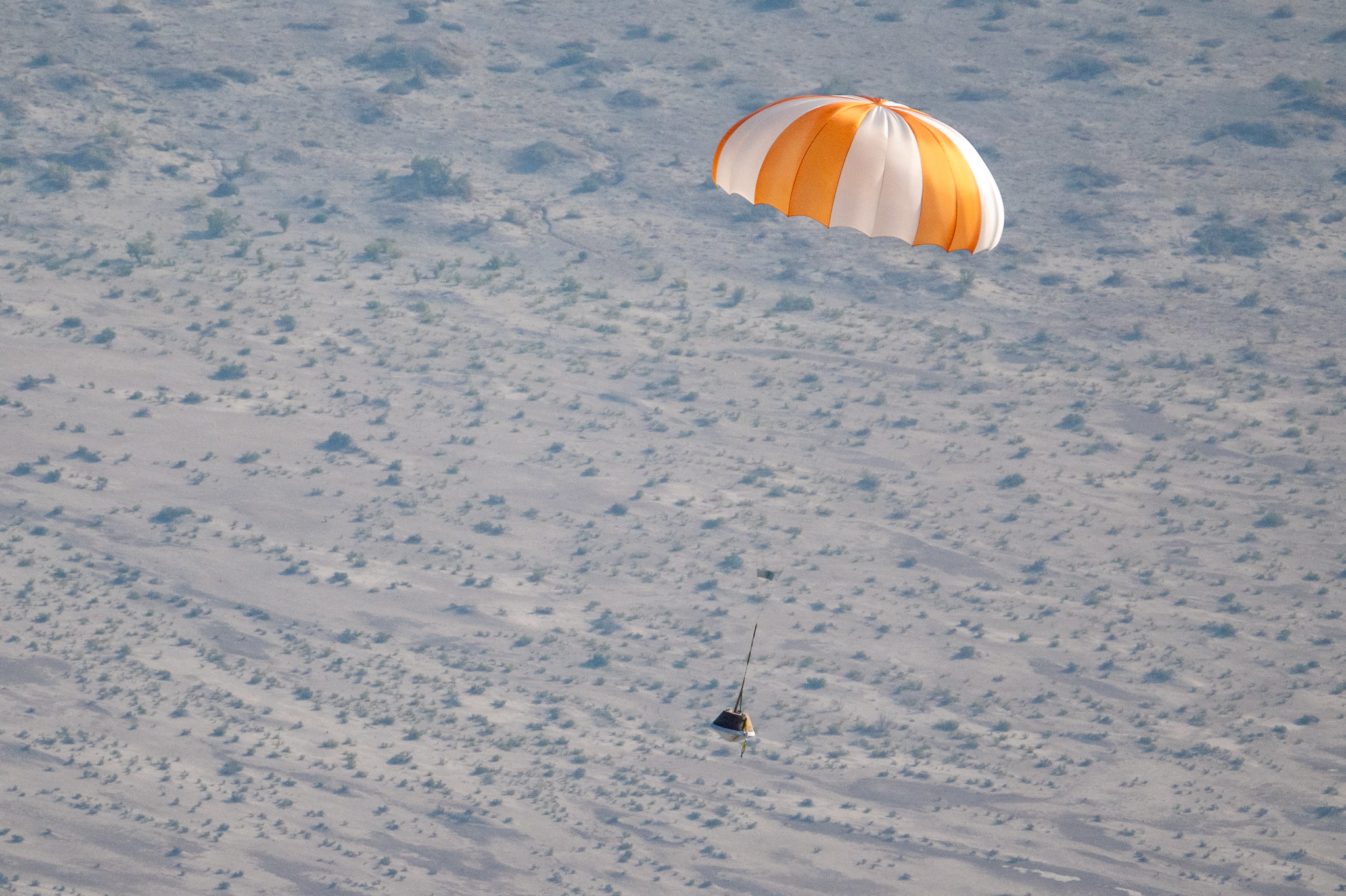WAILEA, Hawaii — A NASA spacecraft is on course to return samples from an asteroid to Earth in less than two days as teams prepare for a variety of both technical and fiscal contingencies.
At a Sept. 22 briefing, officials with the Origins, Spectral Interpretation, Resource Identification, and Security-Regolith Explorer, or OSIRIS-REx, mission said everything was looking good for the reentry and landing of the spacecraft’s sample return capsule in the Utah desert on the morning of Sept. 24.
The spacecraft performed one maneuver Sept. 10, changing its velocity by less than one kilometer per hour so that its trajectory lined up with the Utah Test and Training Range southwest of Salt Lake City. A second maneuver Sept. 17, adjusting the spacecraft’s speed by only three millimeters per second, shifted the predicted landing location to the center of an ellipse, 58 by 14 kilometers, within the range.
“No additional maneuver opportunities were needed. The spacecraft trajectory and performance has just been spot on,” said Sandra Freund, OSIRIS-REx program manager at Lockheed Martin, during the briefing.
A final go/no-go decision to separate the capsule from the main spacecraft will take place early Sept. 24, which she said is intended to confirm that the spacecraft was in good condition and on course. “We fully expect to leave that meeting on Sunday morning with a ‘go’ decision.”
If the decision is indeed go, the capsule will separate from the main spacecraft at 6:42 a.m. Eastern. Twenty minutes later, the main spacecraft will perform a maneuver to avoid the Earth, setting up an extended mission to visit the asteroid Apophis in 2029.
The capsule will enter the Earth’s atmosphere off the California coast at 10:42 a.m. Eastern with landing about 13 minutes later. Recovery teams will then move the capsule to a temporary clean room at the range within a few hours of landing to prepare it to transport the following day to a special curation facility at NASA’s Johnson Space Center.
While officials expressed confidence that the landing and recovery will go as planned, they said they are preparing for various scenarios if things go wrong, including those that might expose the asteroid samples inside the capsule. “OSIRIS-REx has been so successful because we continue to pay attention to the details, thinking through all possible contingencies,” said Dante Lauretta, principal investigator for the mission at the University of Arizona.
Inside the capsule is an estimated 250 grams of material that OSIRIS-REx gathered during a “touch-and-go” sample collection maneuver at the asteroid Bennu in October 2020. Lauretta said that the team does not yet have a precise estimate of the amount of material on board, with a margin of error in that estimated mass of 101 grams. Even at the lower end, though, the mission will still far exceed its requirement to return 60 grams from Bennu.
If all goes according to plan, project officials said they expect to open the sample canister itself by Sept. 26 at the JSC curation facility. NASA has planned an Oct. 11 event at JSC to publicly unveil the samples.
That schedule, though, could be jeopardized by factors outside the mission’s control. The federal government is heading towards a shutdown at the start of the new fiscal year Oct. 1 unless Congress can pass a short-term spending bill called a continuing resolution. The White House Office of Management and Budget instructed federal agencies Sept. 22 to update their shutdown guidance plans.
At the briefing, Lori Glaze, director of NASA’s planetary science division, said that the samples would remain safe in the event of a shutdown but that work to study them could be suspended.
“Certain steps leading to its highly anticipated analysis will possibly be delayed,” she said of the samples, “but the sample will remain protected and safe on despite any unforeseen disruptions to the schedule.”
She advised patience in the event of such delays. “The samples waited for more than four billion years for humans to study it, and if it takes us a little longer, I think we’ll be ok.”
